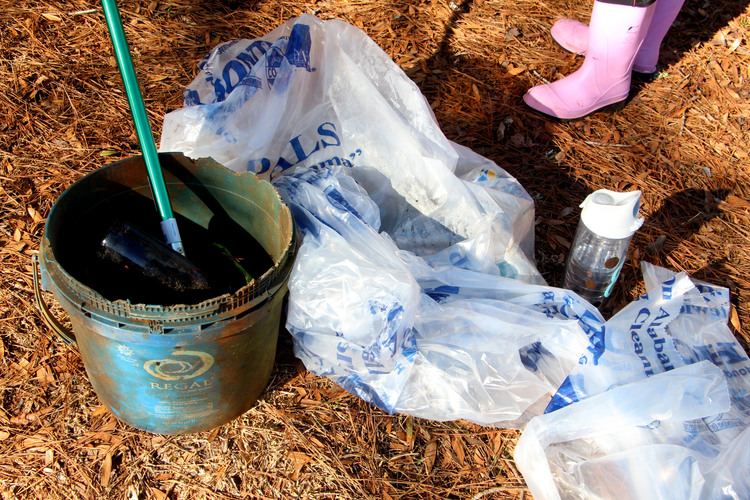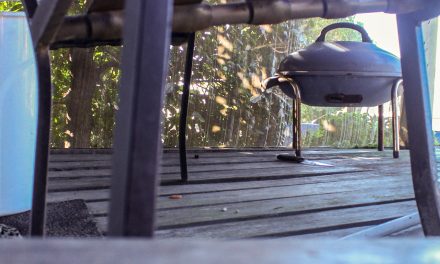STORY AND PHOTOS BY
KELSEY FARMAN
At the first Lake Tuscaloosa winter cleanup two years ago, a University of Alabama student found a bottle. Inside of the bottle was a message from a third-grade student at Berry Elementary School. In the note, addressed “Dear Bottle-finder,” she asked that the reader of her message come visit her school.
The bottle-finder brought the message to his geography professor, Mary Wallace Pitts who is the coordinator of the North River Watershed. One of her duties is educating young students about water management. Berry Elementary was already on her schedule, so she brought the bottle with her when she went.
However, when she showed the letter to the school administration, she ran into some issues.
No one at the school had heard of the letter-writer, and the teacher mentioned in the note had been retired for years.
Eventually, Pitts learned that the bottle, which had traveled over 25 miles down the North River, had been sent over ten years ago.
“Did my students learn that trash from Berry ends up in Lake Tuscaloosa?” Pitts asked. “No. They learned that if they threw bottles with messages, teachers would come to their school and do fun stuff,” she said.
Friday, Pitts and the Tuscaloosa lakes manager, Scott Sanderford, held the third annual Lake Tuscaloosa winter cleanup. This cleanup is geared towards University of Alabama students, and they said the amount of volunteers has tripled since the first event. The group of 37 volunteers removed over 900 pounds of trash from the shores of the lake.
Pitts said the event has two purposes, the first being to spread awareness on campus about water-related issues.
Lake Tuscaloosa is the main source of drinking water for the city and surrounding areas. Wind and rain blow garbage from the roads into the creeks that feed into the lake. Sanderford said that more than 35 tons of trash has been removed from the lake in the past six years.
Much of this debris is made of plastic, a non-biodegradable material.
“First off, there’s an aesthetic reason that we don’t want it there,” Sanderford said. “Obviously, people don’t want to go out on the lake and see trash.”
He also said that when the plastic eventually does break down, it releases harmful chemicals that impact the water quality and raise the cost of water treatment.
Aside from cleaning and educating, Pitts said the other purpose of this event is to strengthen the partnership between UA students and the Tuscaloosa community. She said that although the student population is transitory, they still make up a huge part of city’s population.
“It’s really important that students feel engaged and part of it, and that they can contribute back to it in any form,” she said.
UA senior Gabrielle Hance did not find messages in any of the bottles she collected Friday, but said the debris she encountered was shocking nonetheless.
“A lot of people think that if you don’t see it, then it’s not there,” she said.
Hance found refrigerator coils, parts of a boat and a 5-by-1 foot block of plastic foam floating along the banks.
“I think it’s all about ignorance,” she said. “Once people realize the effect that they have on the environment, I’m sure they’d be a lot more willing to throw out their trash correctly, recycle correctly, and make sure that it’s not being dumped in some waterway.”






